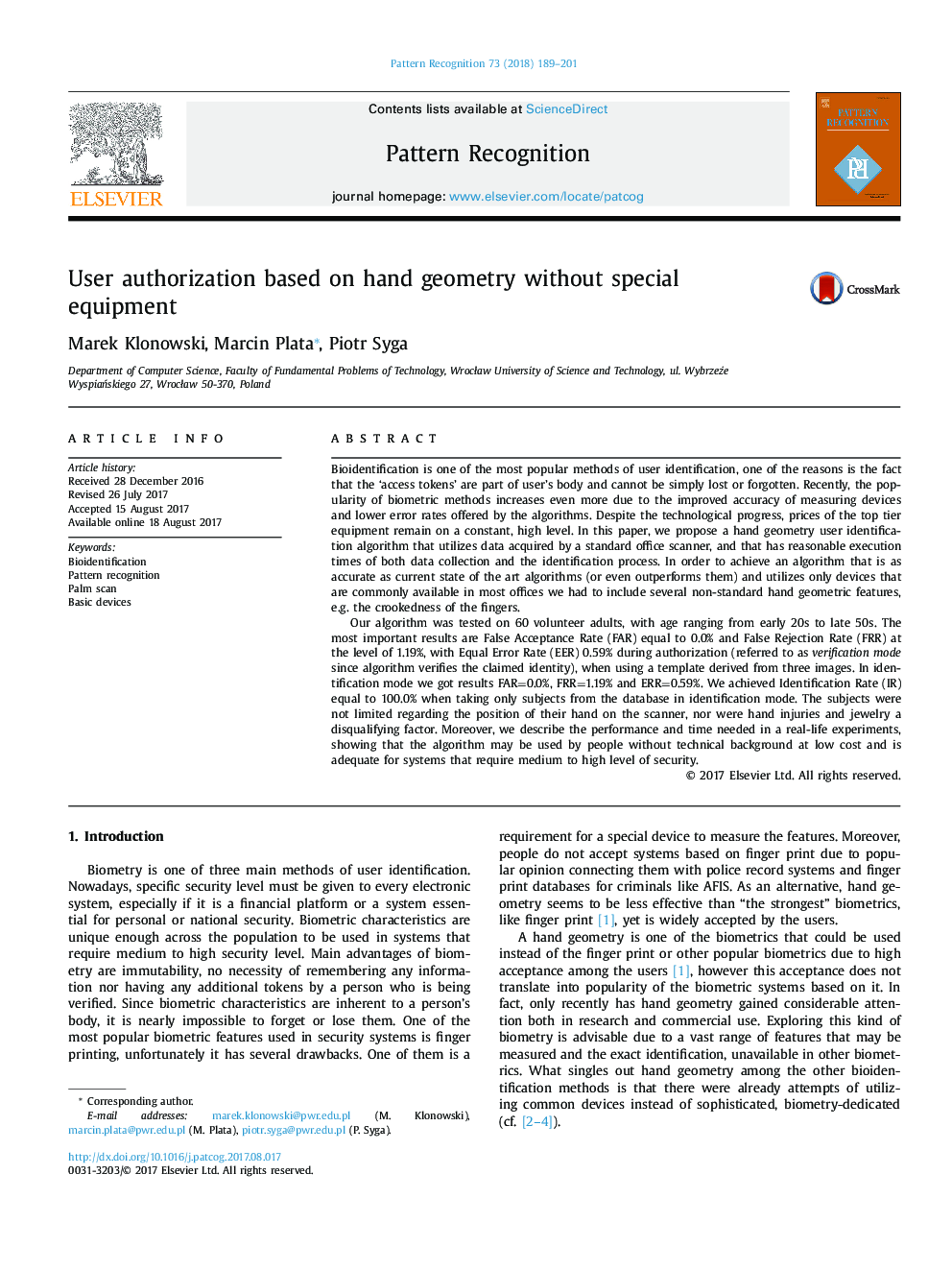| کد مقاله | کد نشریه | سال انتشار | مقاله انگلیسی | نسخه تمام متن |
|---|---|---|---|---|
| 4969571 | 1449974 | 2018 | 13 صفحه PDF | دانلود رایگان |
- We present a biometric identification protocol based on hand geometry that does not require any special devices (we use standard office scanners).
- Our method offers FAR and FRR levels similar or even better than best known protocols.
- The new method is based on adding characteristic features of the hand not included in previous work and very careful choice of parameters.
Bioidentification is one of the most popular methods of user identification, one of the reasons is the fact that the 'access tokens' are part of user's body and cannot be simply lost or forgotten. Recently, the popularity of biometric methods increases even more due to the improved accuracy of measuring devices and lower error rates offered by the algorithms. Despite the technological progress, prices of the top tier equipment remain on a constant, high level. In this paper, we propose a hand geometry user identification algorithm that utilizes data acquired by a standard office scanner, and that has reasonable execution times of both data collection and the identification process. In order to achieve an algorithm that is as accurate as current state of the art algorithms (or even outperforms them) and utilizes only devices that are commonly available in most offices we had to include several non-standard hand geometric features, e.g. the crookedness of the fingers.Our algorithm was tested on 60 volunteer adults, with age ranging from early 20s to late 50s. The most important results are False Acceptance Rate (FAR) equal to 0.0% and False Rejection Rate (FRR) at the level of 1.19%, with Equal Error Rate (EER) 0.59% during authorization (referred to as verification mode since algorithm verifies the claimed identity), when using a template derived from three images. In identification mode we got results FAR=0.0%, FRR=1.19% and ERR=0.59%. We achieved Identification Rate (IR) equal to 100.0% when taking only subjects from the database in identification mode. The subjects were not limited regarding the position of their hand on the scanner, nor were hand injuries and jewelry a disqualifying factor. Moreover, we describe the performance and time needed in a real-life experiments, showing that the algorithm may be used by people without technical background at low cost and is adequate for systems that require medium to high level of security.
Journal: Pattern Recognition - Volume 73, January 2018, Pages 189-201
